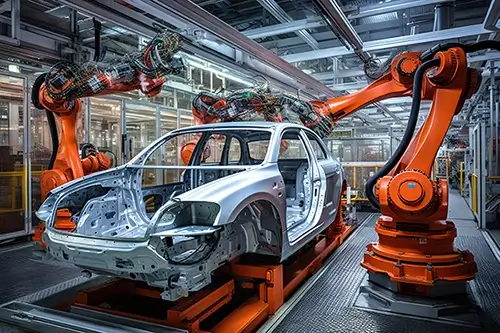Table of contents
Table of contents- Supply Chain Collaboration: Navigating the Constant Disruptions of the New Normal
- The context in which the supply chain operates today
- Overcoming the adverse context through supply chain collaboration
- The importance of segmenting your product assortment
- Conclusion: You cannot afford not to collaborate in your supply chain
- FAQs about Collaborative Supply Chain Planning
This is a glorious time for the supply chain. We have technical capabilities at our fingertips that our predecessors never dreamt of having. Robotisation and automation are contributing to a supply chain productivity never seen before, Big Data and predictive analytics are helping us to understand the world much better, and Artificial Intelligence is starting to show its full potential. All these ingredients are the perfect mix for us to be facing the best moment in the history of the supply chain. Isn’t that so?
Well, the harsh reality is that it is not. You don’t need to be a market expert to know that many large companies have suffered significant devaluations in their share price due to supply chain issues. So, the million-dollar question is: If we have so much good technology, why do we have so many supply chain problems?
In fact, there is no single answer.
The context in which the supply chain operates today
While technology has evolved a great deal in recent years, the context in which the supply chain operates has also changed a lot. In this respect, there are four points worth highlighting:
Constantly evolving customer expectations
Customers now interact with brands across multiple platforms. In today’s world, offline and online realities coexist, and customers want a seamless experience across different touchpoints to interact with the company wherever, whenever and on whatever device they choose. In addition, people now make their purchasing decisions based on how closely companies share their own values, particularly around sustainability and diversity.
Multiple touchpoints
Traditionally, businesses specialised in either the manufacturing, distribution or retailing of products. Now, hundreds of brands do all three. The nodes of inventory positioning and order fulfilment have multiplied to provide an omnichannel customer experience. This means that customer touchpoints are multiplying, and so is complexity.
The emergence of social commerce
Today’s social networks are where trends begin. To meet customer expectations, highly personalised products, with short life cycles and the notion of exclusivity, must be offered, resulting in complex assortments.
Disruption is the new normal
This is perhaps the element of the global context affecting the supply chain we are all most aware of. Energy and commodity prices are volatile, political unrest is on the rise, interest rates are soaring, currencies are fluctuating. All of these difficulties have a profound effect on the supply chain.
Overcoming the adverse context through supply chain collaboration
We cannot change the context in which the supply chain operates, but we do have the ability to deal with it in an optimal way. And the best way to do this is through collaboration, both within the organisation and with the rest of the supply chain
Keys to improving internal supply chain collaboration
Sharing KPIs across departments
People respond to incentives. This is a fact. In a company’s sense, this means that the commercial department’s concern is to sell as much as possible (for which it needs the highest possible level of service), the financial department wants to improve profitability and the supply chain department wants operations to be as efficient as possible.
However, the individual objectives of each department may not coincide with the overall objectives of the company. For this reason, KPIs which cross-cut all departments should be established. Forecast accuracy, product availability and inventory levels are examples of KPIs that can be cross-cutting, and which will be improved through supply chain collaboration.
Clear roles and responsibilities
Once the KPIs have been established, each party must be clear about their roles and responsibilities in relation to achieving the overall business goals.
Let’s look at the objective, need and purpose of each department.
Sales / Marketing
- Objective: To increase revenue, profit margins and market share through an optimal customer experience.
- Need: Product availability.
- Purpose: To develop a sales and marketing plan to achieve the objectives.
Finance
- Objective: To increase profitability and stakeholder value.
- Need: Access to business plans and supply chain cost structure.
- Purpose: To develop a financial plan to help achieve objectives.
Supply Chain Planning
- Objective: To provide an optimal level of inventory availability to meet annual operating plans (AOPs) and business plans.
- Need: Access to forecasts, AOPs and business plans.
- Purpose: To develop a feasible demand and supply plan to manage supply disruptions.
Supply Chain Execution
- Objective: To optimise inventory and supply chain costs.
- Need: Validated stable forecasts.
- Purpose: To carry out supply, replenishment and allocation tasks.
How can we align this myriad of goals and needs? Well, as we have explained in previous articles, at this point S&OP plays a key role.
Collaboration with other links in the supply chain
We have already seen the power of supply chain collaboration within the organisation. But, as its name suggests, the supply chain is made up of links, and it is very difficult for us to be efficient if we do not have the complicity of our suppliers and customers.
Our understanding and levels of supply chain collaboration with our suppliers will depend to a large extent on how efficient we are when it comes to procurement. To make the relationship as productive as possible, it is advisable to consider the following points:
Adopt a win-win approach
Traditionally, when people think of “better sourcing”, they think of buying at a cheaper price or on more advantageous terms. This can be a mistake, because in this perspective, only one party benefits. Instead, a fruitful collaboration should benefit both parties involved.
Collect and analyse data
When collaborating with suppliers, information is essential. Data, if properly analysed, will help you measure your own KPIs along with those of your suppliers to enable you to make informed decisions about how fruitful your relationship is. This information will also allow you to identify bottlenecks, opportunities for improvement, and risks.
Use technology to collaborate
One of the main goals of supply chain collaboration is to achieve greater visibility that facilitates end-to-end supply chain planning. To achieve this complete view, the role of technology is critical to enable effective communication with suppliers and customers.
In this way, we can enrich the demand forecast with information from the buyer, and detect potential supply bottlenecks with data provided by the supplier. This allows us to navigate volatility and disruptions in the supply chain with greater confidence.
Real Case: Kruitbosch Improves Supply Chain Collaboration with Slim4
The bicycle industry experienced a post-pandemic boom due to people’s desire for outdoor exercise. However, once the initial enthusiasm waned, challenges in the form of demand stagnation emerged.
In this context, bicycle manufacturer Kruitbosch decided to use Slim4 to optimise its supply chain. Thanks to the platform’s robust forecasting capabilities, the planning team can aggregate, segment and share demand information as needed. This enables Kruitbosch to create long-, medium- and short-term visibility, fostering more effective supply chain collaboration with suppliers, all from a single source of data.
Read the full success story of Kruitbosch.
The importance of segmenting your product assortment
Another way to overcome the current supply chain context is to concentrate the organisation’s efforts where it really matters. In businesses with hundreds, or sometimes thousands, of SKUs it is not possible to pay attention to the entire assortment, and we must focus on the items that contribute most to our profit margin.
In this sense, segmenting the product portfolio according to criteria such as “volume/value; predictability/volatility; promotional and seasonal products” can help business teams to focus on the most important items. As such, we suggest that you manage products according to the value they bring to your business and their volatility as follows:
High-value, low-volatility products
- Rely on statistics and sales history and act accordingly
- Make few adjustments to the forecast (only those strictly necessary)
High-value, high-volatility products
- Enrich statistics and sales history with market intelligence
- Clean your historical data diligently
Low-value, low-volatility products
- Let the system take care of the management automatically
- Make few forecast adjustments (only those strictly necessary)
Low-value, high-volatility products
- Implement a management by exception model
Conclusion: You cannot afford not to collaborate in your supply chain
Despite being in an era with access to the most advanced technology for supply chain management, we are also facing a highly complex environment. Customer expectations are constantly rising, omnichannel is practically an obligation, and disruptions in the supply chain have become the new normal.
In this context, technology is helpful, but supply chain collaboration is indispensable. This means aligning objectives within your organisation so that everyone works towards the same goals, putting talent and effort at the service of the company’s overall objectives. Similarly, the other links in the chain – your suppliers and your customers – become essential for effectively predicting demand and detecting potential bottlenecks in a timely manner.
FAQs about Collaborative Supply Chain Planning
What is meant by supply chain collaboration?
Supply chain collaboration extends beyond external partners and includes collaboration within the same organisation. This means that different entities within a supply chain, such as suppliers, manufacturers, distributors and retailers work together seamlessly. It also involves various business departments and teams working together to align their processes, goals and strategies, creating a unified and efficient internal supply chain.
What is an example of supply chain collaboration?
An example of supply chain collaboration is seen in the automotive industry. Car manufacturers work closely with their suppliers to ensure just-in-time inventory, high-quality components, and cost efficiency. Through collaborative forecasting and information sharing, they can adjust production schedules and inventory levels to respond quickly to market demand, reducing waste and costs, while maintaining high product quality.
What are the benefits of supply chain collaboration?
Supply chain collaboration offers numerous benefits, including:
- Improved Efficiency: Streamlined processes and better coordination lead to reduced lead times and increased productivity.
- Cost Reduction: Collaboration helps minimise inventory, transportation and operational costs.
- Enhanced Flexibility: Supply chains become more adaptable and responsive to market changes.
- Higher Quality: Collaboration improves product quality and consistency.
- Increased Innovation: Partners can jointly develop new products and solutions.
- Risk Mitigation: Collaboration allows for better risk assessment and management.
- Customer Satisfaction: Faster deliveries and reliable service enhance customer satisfaction.
What’s the role of technology in supply chain collaboration?
Technology plays a critical role in supply chain collaboration by enabling efficient information sharing, communication and visibility. It streamlines processes, automates routine tasks, and provides valuable data insights for better decision making. Technology facilitates real-time collaboration among supply chain partners, ensuring they can work together seamlessly and respond to market changes quickly.







